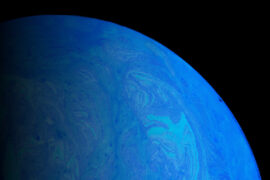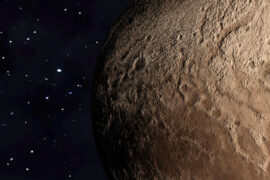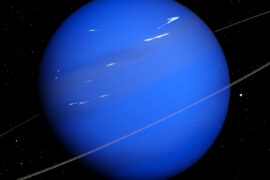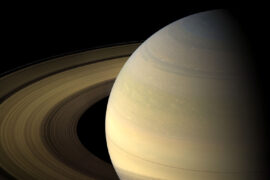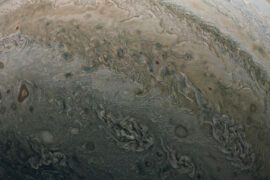Saturn is the farthest planet in the Solar system that is visible without the help of a telescope. It has been studied since ancient times, and yet, there is much about it that we don’t know yet.
Its prominent rings make it the most easily recognizable planet in the Solar system and one of the most popular targets of research for scientists and astronomers.
In this article, we’ll take a look at some of the unique characteristics of Saturn. Let’s explore some of the things that make it stand out from the rest of the planets in the Solar system.
1. Saturn would float on water
If you had a pool big enough – let’s say the size of the Solar system – and you were to drop Saturn into it. The whole planet would just float. Just like a beach ball.
This is because Saturn is mostly made out of gas and is not very dense. On water, any object that has a density of less than 1 g/cm3 will float. Saturn has a density of 0.92 g/cm3 so it could theoretically float.
While this is a fun fact, the truth is that in reality, you couldn’t have a pool large enough to fit Saturn because gravity wouldn’t allow it. A pool that large would first collapse under its own weight and turn into a star.
2. Saturn has the biggest rings in the Solar system
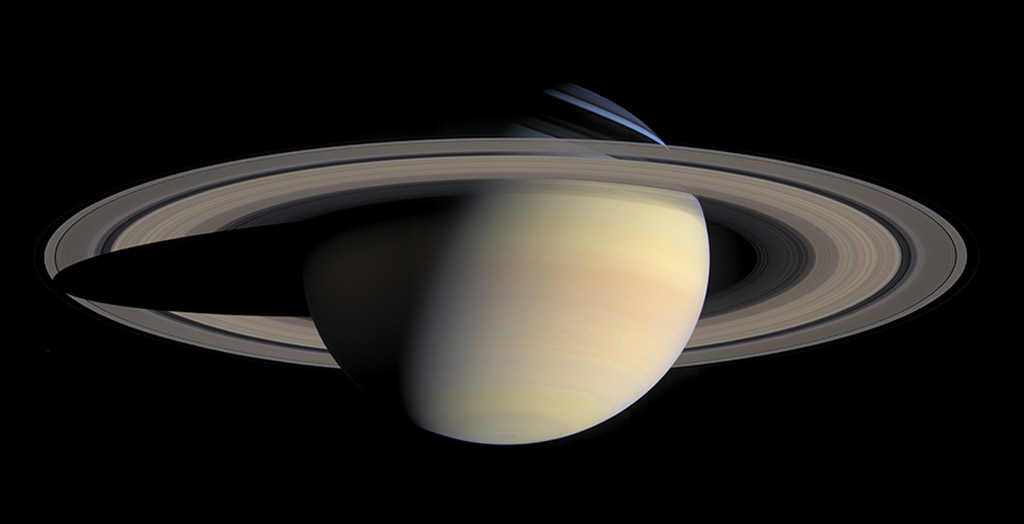
The most recognizable feature of Saturn is the sets of rings around the planet. Saturn is not the only planet with rings in the Solar system. All of the gas giants have them, but Saturn has by far the biggest and most prominent ones. They are so big they can be observed with a basic home telescope and even binoculars.
The rings are made of billions of tiny pieces of rock and ice. Astronomers believe the rings were originally comets or asteroids that were captured by Saturn’s gravity and were crushed by the large gravity of the planet.
3. Saturn does not have a surface
Saturn is classified as a “gas giant” along with Jupiter, Neptune, and Uranus. These planets do not have a solid surface like Earth or Mars. Instead, they are mostly made out of gas.
If a spaceship were to “fall” into Saturn, it would just sink all the way into the center of the planet. Well, it would probably be destroyed first by the extreme winds, temperatures, and high pressures. But Assuming it could survive that, it would just sink until it reached the planet’s core.
Astronomers are not sure that even the core of the planet is solid or if it is in a semi-liquid state.
4. Saturn has a hurricane that is shaped like a hexagon
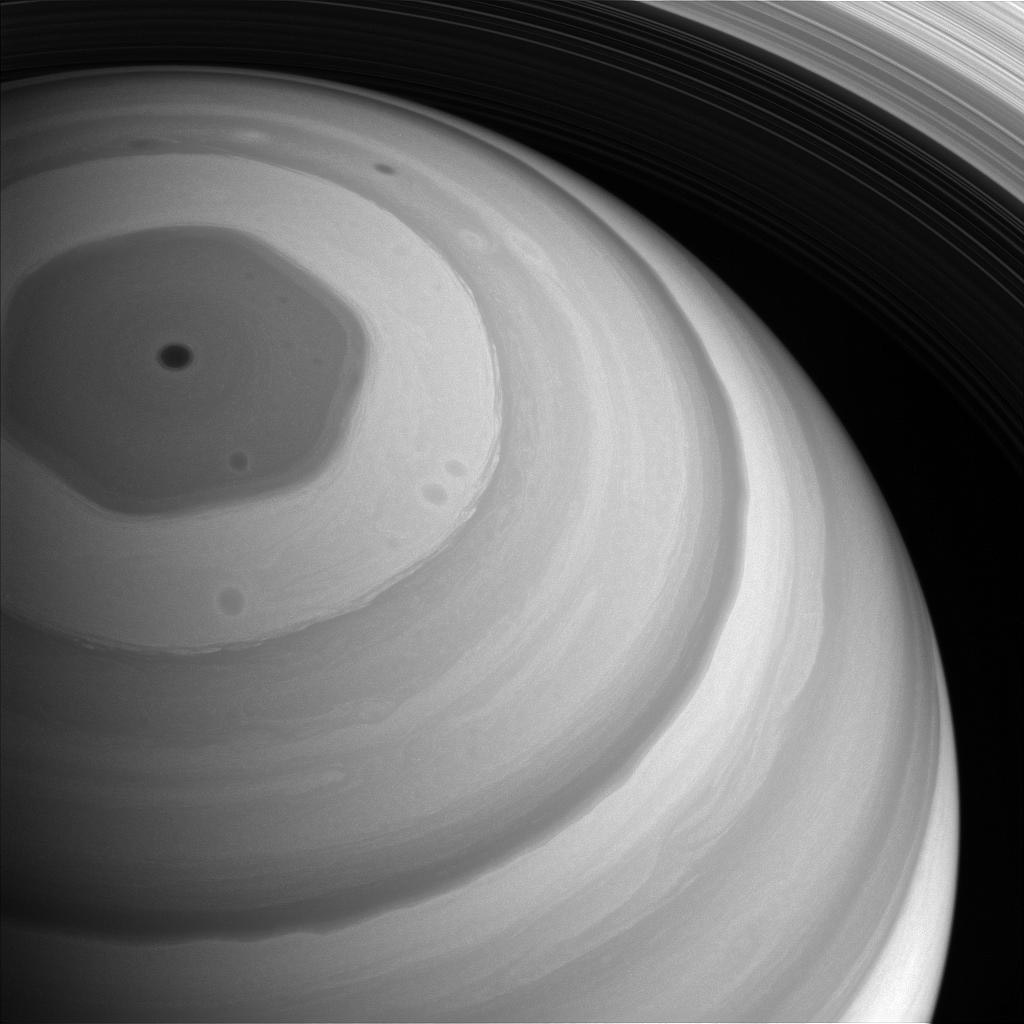
One of the most peculiar features of Saturn is a huge hexagon-shaped spot that is located on its north pole. The hexagon is slightly visible using telescopes with an aperture larger than 150 mm (6 inches) but it wasn’t fully confirmed until the Cassini spacecraft snapped some up-close photos in 1981.
The hexagon is an enormous storm that has been raging on Saturn for centuries. Just to give you an idea of how big it is, each of the sides of the hexagon is larger than Earth’s diameter.
There are a few theories as to why this storm has such a unique geometric shape. It appears that is caused by a “ring” of winds that surrounds the storm but that are circling in the opposite direction as the storm itself. Scientists have been able to reproduce the effect on a smaller scale and have managed to get different shapes like triangles and octagons.
5. It rains diamonds on Saturn
Some ancient civilizations believed that diamonds on Earth came from the sky. Now we know that is not the case, and that they are formed when carbon atoms are exposed to extremely high temperatures and pressures underground.
Well. In Saturn diamonds are actually formed in the clouds and they “rain” all over the planet. There are layers of the planet where the temperatures and pressure rise, and the molecules of methane are turned into diamonds.
The diamonds then “rain”, but since there is no surface, they just sink into the planet until they reach areas that are even hotter where they evaporate.
6. A day on Saturn is shorter than a day on Earth
With how big Saturn is, you could think that it takes the planet a long time to rotate. But that’s not the case at all. Saturn rotates very fast. As a matter of fact, the only planet that rotates faster than Saturn is Jupiter.
Saturn rotates at a speed of 9.87 km/s (6.13 miles per second). That means that one day in Saturn lasts only 10 hours and 30 minutes approximately. For comparison, Earth rotates at 0.46 km/s (0.28 miles per second) which is still really fast as it is 1,656 km per hour (1,029 miles per hour).
The reason why Saturn spins so fast is its huge gravity. As the gas clouds are pulled toward its center, the planet speeds up to conserve angular momentum. This same concept is used by ice skaters when they pull their arms toward their center of gravity when they want to spin faster.
7. Saturn has the same composition as a star
Saturn is way too small to be a star, however, it does share one key characteristic with them. Their chemical composition.
Saturn is mostly made out of two things. Hydrogen and helium. Stars also have a similar composition. The difference is in the percentage. Saturn has about 75% of hydrogen while most main-sequence stars can have over 90%. This doesn’t mean that Saturn could be a star if that percentage would change. It’s still too small.
Stars fuse hydrogen atoms in their cores and the result is helium atoms. So a good chunk of a star’s composition is also helium.
8. Saturn is the farthest planet that is visible without a telescope
The average distance between Earth and Saturn is 1.4 billion kilometers (887 million miles). That is more than 9 times farther away than the Sun.
And yet, Saturn is so big that it is visible from our planet without the help of a telescope. Saturn was considered to be the last planet of the Solar system before the invention of the telescope and the discovery of Neptune and Uranus.
The first written records of Saturn that have been found were left by the Assyrian civilization, in what is now Iraq. These date back to 700 B.C. and they called it the Star of Ninib after the god of the spring.
9. Saturn is the planet with the highest number of Moons
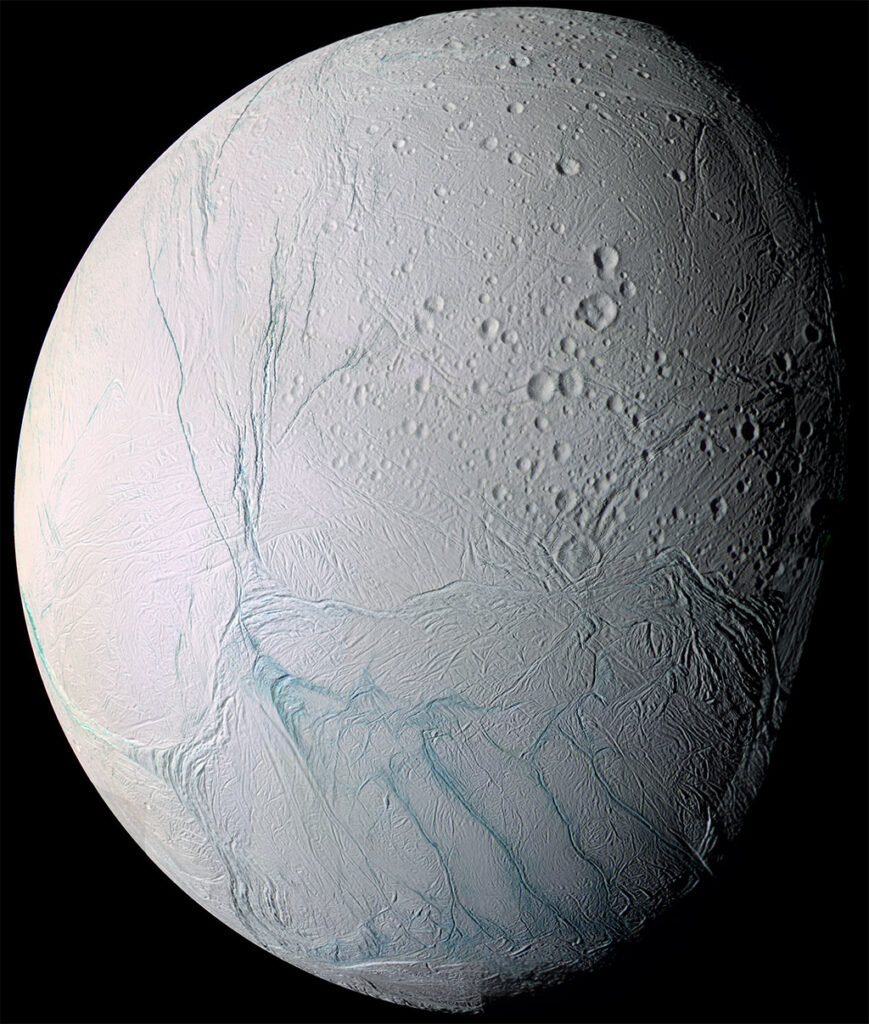
For the past few decades, Saturn and Jupiter have been in a constant battle for the title of the planet with the most natural satellites (moons). As our telescope and imaging technology advances, more and more moons are being discovered.
Saturn currently holds the title with 146 moons. Most of them are small moons that are only a few dozen meters wide, but a few are quite big and interesting. For example, Enceladus and Titan are two of the best candidates in the Solar system for places that could support water and possibly extraterrestrial life.
It is very likely that more of Saturn’s moons will be discovered in the future.
10. Saturn is losing its rings
Unfortunately, the most prominent characteristic of Saturn will not be there in the future.
Saturn’s gravity is constantly pulling small pieces of the rocks and ice that make up the rings, slowly making the rings thinner.
Astronomers estimate that the rest of the rings will be “consumed” by the planet in the next 300 million years, which is not too long into the future in astronomical terms.
So we are very lucky that our civilization exists at the same as Saturn’s rings because we get to study them and observe them while they are still there.


